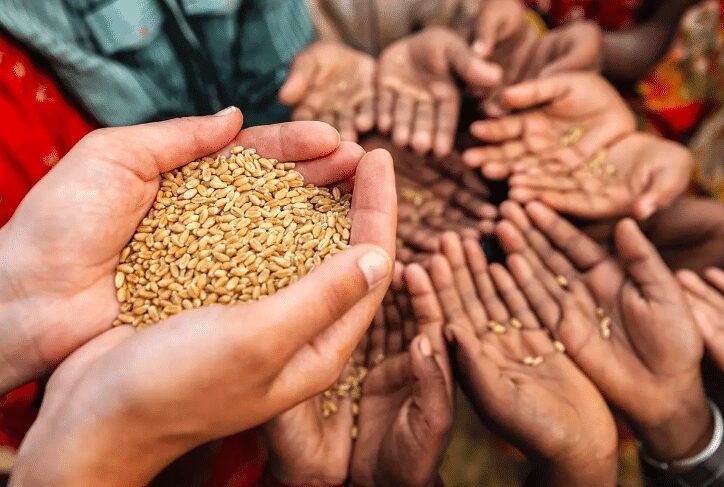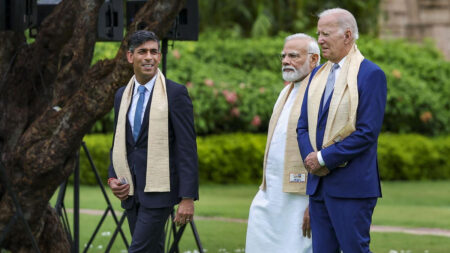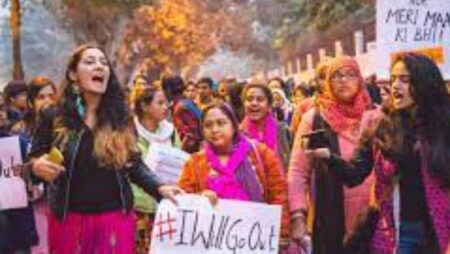India has one of the lowest rankings on The Global Hunger Index, despite having one of the world’s fastest-growing economies at the moment.
Welthungerhilfe and Concern International just released the Global Hunger Index 2022. The sixteenth yearly release of this report. Yemen received the lowest index score, 121, while European nations topped the list. The top two countries in Asia were Kuwait and China.
India now ranks 107 out of 121 countries in the index, down from its previous position of 101 in 2021. India falls into the Serious category of hunger with a score of 29.1. India’s ranking in the index is much lower than that of its neighbouring countries, including Pakistan, Bangladesh, Nepal, and Sri Lanka.
What does the term “hunger” mean?
The World Food Programme defines hunger as a state in which a person consumes less calories each day than are necessary for their healthy survival. People’s inability to spend their money or resources is what causes hunger. With the recent global crises, such as the Russia-Ukraine conflict, which cut off the supply of food, fuel, and other essential resources, the COVID-19 Crisis, which nearly brought the entire world to a standstill, climate change, and other geopolitical crises, the world is currently experiencing a number of crises. And right now, the global hunger issue is at its worst.
It is made worse in India because of significant policy changes like the installation of the GST and demonetisation. Even though India has experienced hunger since its independence, this issue still affects the country. And the index’s results serve as a sobering reminder for India, which is currently one of the developing nations with the strongest growth rates.
Why is the Index important?
Since 2000, the index has been issued virtually annually to track countries’ successes and failures in combating the hunger crisis. It was created to gauge and monitor hunger on a global, regional, and national scale.
It is based on a system where the nation with the lowest rating receives the top ranking, which enables the nations to reflect on how serious the problem is and take appropriate action to address the catastrophe.
Not only does the Global Hunger Index restrict reporting on hunger. The levels of nutrition, the availability of food, and the number of people who die from hunger are some of the metrics used to track hunger. This assists in taking the most accurate hunger measurements.
What metrics are used to assess hunger?
- Undernourishment: It is characterized by a lower caloric intake, which worsens a person’s physical and mental condition.
- Undernutrition: This refers to a lack of nutrition in the food ingested that goes beyond calorie consumption. It includes (a) child stunting, which is having less height for age, and (b) child wasting, which is having less weight for height.
- Child mortality: Refers to the death of children under the age of five as a result of both inadequate nutrition and an unhealthy environment.

Indicators and how important they are?
Each of these indicators has an equal weighting of 33.3%, and the data for each nation is generated on a scale of 100 points. Therefore, the countries with a score of less than or equal to 9.9 fall into the “low” group, while those with a score of 20 to 34.9 fall into the “serious” category, and those with a score of more than 50 fall into the “very frightening” category of hunger.

Where does India stand in the indicators?
India has a persistently poor hunger situation, but two of the indicators—undernourishment and child waste—started to get worse in 2014. India scored 14.8 in 2014 and 16.3 in 2022 for undernourishment, and from 15.1 in 2014 to 19.3 in 2022 for child wasting under the age of 5.
India, on the other hand, has marginally improved in two metrics. India decreases child mortality from 4.6% in 2014 to 3.3% in 2022 and decreases child stunting from 38.7% to 35.5%.
India’s score has overall slightly declined from 28.2 in 2014 to 29.2 in 2022. Although the Global Hunger Index does not evaluate a nation’s condition based on how it performed in prior years.

Efforts taken by the Indian government to combat hunger?
- The 1975-launched Integrated Child Development Scheme is made up of numerous programmes, including the,
- Anganwadi Service Scheme for mothers and early childhood care.
- Pradhan Mantri Matru Vandana Yojana, A financial incentive for expectant and nursing mothers.
- National creches, Daycare centers for children of working moms between the ages of 6 months and 6 years.
- Taking care of the nutritional state of adolescent girls is the goal of the scheme for girls.
- Child Protection Scheme, Emphasizes the physical and mental well-being of children.
- Launched in 2017–18, the Poshan Abhiyan aims to reduce undernutrition and malnutrition in coordination with other programmes.
- Antyodaya Anna Yojna, which was established in 2003–2004, aims to provide meals at reduced costs to those who fall under the SECC.
- Malnutrition in the nation by focusing primarily on children, adolescents, and pregnant women by the National Nutrition Mission.
- Mid-Day Meal Program, to address the pupils’ nutritional needs in public schools.
- Improved agricultural productivity is a goal of the National Food Security Mission, particularly for rice, wheat, and pulses.
- To enhance agricultural production and end the supply shortage, the National Mission on Sustainable Agriculture was also established.
Ending hunger and poverty is the first goal of the MDG but it was not achieved, so in 2015 “Sustainable Development goals” were set down to achieve “Zero Hunger” by 2030. The calculation of the Global Hunger Index comes from the fact that “Zero Hunger” was achieved with the setting up of “Millennium Development Goals” for 15 years from 2000 to 2015. And for many high-income nations, the Global Hunger Index is not calculated for this reason.
In the end, hunger is a byproduct of poverty rather than an independent phenomenon. The markers of hunger, malnutrition, undernutrition, and death can be eliminated with time. Therefore, in order to end hunger, nations must concentrate on lowering poverty and wealth disparities. Additionally, they will succeed in achieving the Sustainable Development Goals.














